50+ IB Chemistry IA Ideas
check out our results
Request Free Trial Class
IB Chemistry HL IA Ideas
IB Chemistry HL IA ideas list is available online with expert guidance and examples. The list contains 20 to 50+ IA ideas, including research questions and topic descriptions and IB Chemistry HL Internal assessment examples. Choosing the perfect IB Chemistry IA topic can be made easier by approaching it methodically and evaluating existing research before conducting further research on a topicChemistry HL IA ideas
1.) Does the time of cooking superfoods affect Vitamin C content that leaches into the water?
Experimental Setup:
To determine the amount of vitamin C content in the water after boiling the vegetables, a titration reaction will be performed. The end point of the titration is detected when the color of the solution turns blue black after all the ascorbic acid is used up (the volume of iodine solution used will be recorded)
Independent Variables:
Cooking time of superfoods, superfoods
Constant Variables:
Temperature of cooking water, Volume of water boiled, Starch indicator and amount, mass of vegetables, etc.
Dependent Variables:
Volume of iodine solution used
2.) Impact of temperature on dissolved oxygen concentration
Experimental Setup:
Using the Winkler method to measure the dissolved oxygen concentrations in tap water at varying temperatures of the water samples.
Independent Variables:
Temperature of the water samples
Constant Variables:
‘Pressure and salinity of the water, Time each sample is left
Dependent Variables:
DO concentration of the water sample
3.) How does amount of aspirin moving through a partially permeable membrane change with time?
Experimental Setup:
To determine the concentration of aspirin passed out of the vising tubing, a titration reaction is performed. The endpoint is indicated by a permanent trace of a pink color due to the formation of a basic solution.
Independent Variables:
Time
Constant Variables:
Number of aspirin tablets, Volume of water, Amount of indicator
Dependent Variables:
Volume of Sodium Hydroxide
4.) Calculating peroxide value using iodometric titration in different cooking oils
Experimental Setup:
Any friable food is put in the oil and is let to fry for about 25-30 seconds. After each cycle, some of the oil is stored aside to perform the titration. This is repeated until the same oil has undergone the frying process 5 times. The experiment is to see how the peroxide value changes for the oil when it is fried once and five times. To determine the amount of peroxide value, a titration reaction will be performed and the volume of sodium thiosulfate used in titration is recorded. The end point of the titration is detected when the color of the solution turns blue black. Using the volume of solution used in the titration procedure, the peroxide value is calculated.
Independent Variables:
Type of oil, antioxidant
Constant Variables:
Temperature of the oil, Mass of antioxidant, oil and the frying food, The concentration of Sodium Thiosulfate
Dependent Variables:
The volume of sodium thiosulfate used in titration, Peroxide value
5.) Investigating the degradation of vitamin C in tablets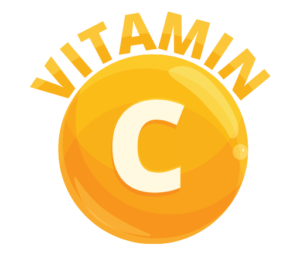
Experimental Setup:
Samples of powdered vitamin C tablets were exposed to the atmosphere for different periods of time, and then dissolved in distilled water. 1 ml of the solution was then titrated with DCPIP (Di-chlorophenol indophenol) stock solution until the solution retained the dark blue-black color. Using the raw data obtained, the shelf life of the vitamin C tablets and the rate of degradation of Vitamin C were calculated.
Independent Variables:
The time each group of tablets are exposed to the atmosphere
Constant Variables:
Brand of the tablets, mass of Vitamin C dissolved in distilled water
Dependent Variables:
Mass of Vitamin C present in the tablets
6.) How does the change in temperature of acetate buffer affect the pH of the acetate buffer when sodium hydroxide is added?
Experimental Setup:
The temperature of the buffer solution will be changed by 20, 30 up to 60 degrees and the pH of the solution will be measured until the buffer reaches a pH of 12. Then, with that, the buffer capacity is calculated along with the temperature dependance of the buffer solution. Firstly, sodium acetate is prepared. Then, sodium hydroxide solution is made. Then, the acetate buffer is prepared. The burettes are then set up according to the experimental setup. Then the buffer solution is heated. Afterward, the acetate buffer solution is set up below the burette system and titration starts. The same is repeated for different temperatures.
Independent Variables:
Temperature of the acetate buffer
Constant Variables:
Initial concentration of acetate buffer and sodium hydroxide, volume of the solutions
Dependent Variables:
pH of the acetate buffer
7.) Does the structure of an alcohol affect its standard enthalpy of combustion?
Experimental Setup:
Set up the appropriate experiment setup. Measure water and put it into the metal can. Pour an alcohol into a spirit burner and then adjust the wick accordingly. Weigh the spirit burner with the cap. Stir the water in the metal can and record the temperature. Remove the cap of the spirit burner and light the wick. Immediately, put it under the metal can of water and continuously stir the water. When there has been a 10 degree rise in the temperature, blow out the flame and replace the cap. Reweigh the spirit burner. Repeat with other alcohols.
Independent Variables:
Alcohol used
Constant Variables:
Volume of water used, Distance from can to wick, Temperature rise, etc.
Dependent Variables:
Mass of alcohol lost
8.) The effect of cyanuric acid on chlorine concentration in swimming pools with 2 hours of sun exposure. (To what extent is the concentration of free chlorin in swimming pools affected by different concentrations of cyanuric acid in water samples containing urea compared to urea free samples?)
Experimental Setup:
To determine the concentration of free chlorine in the water samples, an iodometric redox titration technique is used. Three water samples with different chlorine concentration are obtained. Afterwards, Potassium iodide and starch indicator to determine if they are able to indicate these small concentrations of chlorine in the samples and change the color of the solution. Titration was performed using the water samples and the sodium thiosulfate. The amount of sodium thiosulfate used will determine the amount of free chlorine present.
Independent Variables:
Concentration of cyanuric acid
Constant Variables:
pH, temperature, initial chlorine concentration, concentration of urea, etc.
Dependent Variables:
Concentration of free chlorine
9.) Investigating the effect of a transition metal catalyst on the activation energy of the reaction between Iron nitrate and Sodium thiosulfate
Experimental Setup:
The reactants were placed in individual test tubes. The test tubes filled with reactant solution were placed into the test tube rack and the thermometer was put in one of the test tubes. The test tube rack was placed into the Clifton Water Bath. The test tubes were left in the water bath for 10 minutes, and the reactant solutions were made sure to have achieved the desired temperature by using the thermometer. A cross was drawn on the paper using the pen, and then placed on a surface ready for a measuring cylinder to be put above it. Five measuring cylinders were placed next to the water bath. The Iron(IlI) nitrate reactant solution was poured into the measuring cylinder placed above the cross. The sodium thiosulfate reactant solution was soon after poured into the same measuring cylinder, and then the measuring cylinder was immediately afterwards observed from above. The timer started and stopped as soon as the cross was visible to the naked eye from the top of the measuring cylinder and the time was recorded on the data table.
Independent Variables:
Temperature
Constant Variables:
Concentration and Volume of Reactant and Catalyst solutions, Reaction vessel, etc
Dependent Variables:
Time taken for the reaction to reach the end point
10.) Composition of Different Shades of Lipsticks and the effect of pH on them?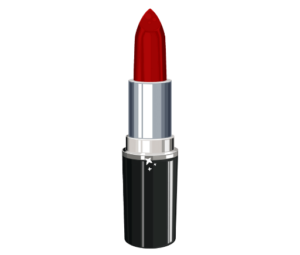
Experimental Setup:
Utilising chromatography, identify and analyse the various pigments within various shades of lipstick and then heating these samples and measuring the degradation of certain pigments
Independent Variables:
Lipstick shades
Dependent Variables:
Degradation of certain pigments
11.) To what extent do different transition metal catalysts affect the rate of a reaction?
Experimental Setup:
Procuring various transition metal catalysts and measuring their effect on the rate of any reaction by measuring the concentration of a substance with accordance to time
Independent Variables:
Transition metal catalysts
Dependent Variables:
Rate of reaction
12.) Investigating the Relationship between Concentration and Optical Rotation of Sucrose Solutions using Polarimetry
Experimental Setup:
In this experiment, we aim to determine the relationship between the concentration of a sucrose solution and its optical rotation. We will measure the optical rotation of sucrose solutions of varying concentrations using a polarimeter. We will prepare solutions of sucrose of concentrations ranging from 1% to 10%. Each solution will be measured in triplicate to ensure precision in the readings. The optical rotation will be recorded as degrees of rotation, and a graph of the optical rotation versus concentration will be plotted.
Independent Variables:
Concentration of the sucrose solution
Constant Variables:
The temperature of the solution, the length of the polarimeter tube, and the wavelength of the light used
Dependent Variables:
Optical rotation of the sucrose solution
13.) Investigating the effect of pH on enzyme activity
Experimental Setup:
Enzymes are biological catalysts that speed up chemical reactions. The activity of enzymes is affected by the pH of the solution they are in. In this experiment, you could investigate how the activity of an enzyme (e.g. catalase) changes as you vary the pH of the solution. You could measure the rate of an enzyme-catalyzed reaction (e.g. decomposition of hydrogen peroxide) at different pH values.
Independent Variables:
pH of the solution
Constant Variables:
Concentration of the enzyme, Concentration of the substrate, and the temperature
Dependent Variables:
Rate of the reaction (measured as the amount of gas produced over time)
14.) Testing the Accuracy of the Winkler Method for Measuring Dissolved Oxygen in Water Samples
Experimental Setup:
To do this experiment, we will collect several water samples from different sources and measure their dissolved oxygen concentration using both the Winkler method and the dissolved oxygen meter. We will then compare the results and calculate the percentage error for each method. We will also investigate the effect of temperature and pH on the accuracy of the Winkler method by repeating the measurements at different temperature and pH levels.
Independent Variables:
Water sample source, temperature, and pH
Constant Variables:
The method of measurement (Winkler method and dissolved oxygen meter)
Dependent Variables:
Dissolved oxygen concentration
15.) Investigate the effect of temperature on the equilibrium constant of a chemical reaction between iodine and thiosulfate ions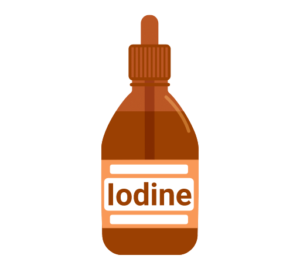
Experimental Setup:
To conduct this experiment, we would first prepare a solution of sodium thiosulfate and potassium iodide in a conical flask. We would then add a known amount of iodine solution to the flask and allow the reaction to reach equilibrium. This can be detected by adding starch solution, which forms a blue-black color in the presence of iodine. We would then titrate the remaining iodine with sodium thiosulfate solution to determine the concentration of iodine that was consumed in the reaction. We would then repeat the experiment at different temperatures, using a water bath or a thermostatically controlled heating mantle to maintain the temperature. We would measure the equilibrium constant at each temperature by calculating the concentration of iodine that was consumed in the reaction and using an equation.
Independent Variables:
Temperature
Constant Variables:
Initial concentrations of the reactants, the volume of the reaction mixture, and the titration procedure used to determine the concentration of iodine
Dependent Variables:
Equilibrium Constant
16.)Investigating the Effect of Storage Temperature on the Sulfite Concentration in Wine
Experimental Setup:
The aim of this experiment is to determine how storage temperature affects the sulfite concentration in wine. Different samples of wine will be stored at various temperatures (e.g. 5°C, 15°C, and 25°C) for a set period of time. The sulfite concentration in each sample will then be measured using a spectrophotometer. The results will be analyzed to identify any correlations between storage temperature and sulfite concentration.
Independent Variables:
Storage temperature (5°C, 15°C, and 25°C)
Constant Variables:
Type of wine, initial sulfite concentration, duration of storage, volume of wine sampled, method of sulfite measurement
Dependent Variables:
Sulfite concentration in wine
17.) Investigating the effect of temperature on the strength of ferromagnets
Experimental Setup:
A sample of a ferromagnetic material such as iron or nickel will be subjected to different temperatures ranging from -10°C to 100°C. A magnetometer will be used to measure the strength of the material’s magnetic field. The experiment will be repeated three times for each temperature, and the average magnetic field strength will be calculated.
Independent Variables:
Temperature
Constant Variables:
Type of ferromagnetic material, size and shape of the sample, the distance of the magnetometer from the sample, and the strength of the magnetometer
Dependent Variables:
Magnetic field strength
18.) Determination of the Concentration of an Acid Using a Back Titration with a Base
Experimental Setup:
In this experiment, you would determine the concentration of an unknown acid by back titration with a standard solution of a base. You would first react to a known amount of the acid with an excess of a known concentration of a base. The remaining base in the solution would then be titrated with a standard solution of an acid to determine the amount of base that was not consumed in the first reaction. From this, you could calculate the amount of acid that was consumed in the first reaction and therefore the concentration of the unknown acid.
Independent Variables:
the volume and concentration of the base used in the first reaction.
Constant Variables:
the volume and concentration of the unknown acid, the volume of the base added, the temperature of the solutions, the accuracy of the burette, and the pH indicator used.
Dependent Variables:
the volume and concentration of the standard acid solution needed to neutralize the excess base.
19.) Investigating the effect of different ligands on the structure and stability of metal complexes
Experimental Setup:
You could synthesize several metal complexes using a common transition metal (e.g. cobalt) and various organic ligands (e.g. ammonia, ethylenediamine, diethylenetriamine). You could then analyze the complexes using various techniques such as UV-Vis spectroscopy, infrared spectroscopy, and melting point determination to determine their structure and stability. You could also compare the reactivity of the complexes with different ligands by performing a substitution reaction to displace one ligand with another.
Independent Variables:
the different ligands used to synthesize the metal complexes.
Constant Variables:
the same transition metal used to synthesize all the complexes, the concentration of the metal ion in the reaction mixture, the solvent used to dissolve the metal ion and ligand, and the temperature at which the reaction is carried out.
Dependent Variables:
the structural and stability differences between the metal complexes synthesized with different ligands
20.) How does the concentration of a solute affect the rate of crystal formation during the process of crystallization?
Experimental Setup:
In this experiment, the effect of the concentration of a solute on the rate of crystal formation during crystallization will be investigated. Sodium chloride will be used as the solute, and distilled water will be used as the solvent. The experiment will involve dissolving varying amounts of sodium chloride in the distilled water to create solutions of different concentrations. The solutions will then be placed in a controlled environment to allow for crystallization to occur. The rate of crystal formation will be measured by observing and recording the time taken for crystals to form in each solution.
Independent Variables:
The concentration of the solute (sodium chloride)
Constant Variables:
Temperature, volume of solvent, type of solute, method of mixing the solution
Dependent Variables:
The rate of crystal formation
21.) How does the wavelength of light affect the accuracy and precision of a spectrometer?
Experimental Setup:
In this experiment, the accuracy and precision of a spectrometer will be investigated with respect to the wavelength of light used. A spectrometer will be set up and calibrated with a known light source, and measurements will be taken at various wavelengths using a series of calibration lamps. The spectrometer readings will be compared to known values to determine accuracy, and multiple measurements will be taken at each wavelength to determine precision.
Independent Variables:
The wavelength of light used in the experiment
Constant Variables:
The same spectrometer will be used throughout the experiment, with the same calibration lamps and settings, the temperature and humidity of the room and the same operator to avoid human error
Dependent Variables:
The accuracy and precision of the spectrometer readings
22.) How does the activation energy of the reaction between hydrochloric acid and sodium thiosulfate change with temperature?
Experimental Setup:
The aim of this experiment is to investigate the effect of temperature on the activation energy of the reaction between hydrochloric acid and sodium thiosulfate. To do this, a series of experiments will be conducted, in which the temperature of the reaction mixture will be varied, and the rate of the reaction will be measured. The reaction will be monitored by measuring the time taken for a cross drawn on a piece of paper to disappear. The temperature of the reaction mixture will be varied by placing the reaction vessel in a water bath set to a specific temperature.
Independent Variables:
The temperature of the reaction mixture, The concentration of the reactants
Constant Variables:
The volume of the reaction mixture, and the method of mixing
Dependent Variables:
The rate of the reaction
23.) How does changing the concentration of the electrolyte affect the potential difference and current generated in a voltaic cell?
Experimental Setup:
The experiment aims to investigate the effect of changing the concentration of the electrolyte on the potential difference and current generated in a voltaic cell. The experiment will involve setting up a simple voltaic cell using zinc and copper electrodes and different concentrations of a common electrolyte, such as copper sulfate solution. The potential difference generated across the electrodes will be measured using a voltmeter, and the current flowing through the cell will be measured using an ammeter. The experiment will be repeated at least three times for each concentration of the electrolyte to ensure accuracy and reliability of results.
Independent Variables:
The concentration of the electrolyte, Temperature of the electrolyte
Constant Variables:
The type of electrolyte, Surface area of the electrodes, Distance between the electrodes, and type of electrodes used
Dependent Variables:
The potential difference and current
24.) How does the concentration of reactants affect the rate of reaction and the mechanism of reaction between sodium thiosulphate and hydrochloric acid?
Experimental Setup:
In this experiment, the effect of concentration on the rate of reaction and the mechanism of reaction between sodium thiosulphate and hydrochloric acid will be investigated. The reaction involves the formation of a yellow precipitate of sulfur when the two solutions are mixed. By measuring the time taken for the precipitate to form, the rate of reaction can be calculated. The concentration of sodium thiosulphate and hydrochloric acid will be varied independently to determine the effect of concentration on the rate of reaction. The experiment will be repeated three times for each concentration to ensure accuracy. The temperature of the solutions and the volume of the solutions will be kept constant to ensure that these variables do not affect the rate of reaction.
Independent Variables:
Concentration and temperature of sodium thiosulphate and hydrochloric acid
Constant Variables:
The volume of the solutions
Dependent Variables:
The rate of reaction
25.) How does the change in entropy affect the spontaneity of the reaction?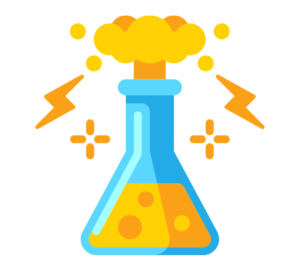
Experimental Setup:
In this experiment, we will investigate the relationship between entropy and spontaneity by measuring the Gibbs free energy change (ΔG) of a chemical reaction at different temperatures. We will use a coffee cup calorimeter to measure the heat absorbed or released during the reaction and calculate ΔG using the equation ΔG = ΔH – TΔS, where ΔH is the enthalpy change of the reaction, T is the temperature in Kelvin, and ΔS is the change in entropy. We will vary the entropy of the system by adding different amounts of a solid solute to a fixed amount of solvent and measure the temperature at which the reaction becomes spontaneous (ΔG < 0). We will repeat the experiment with different solutes to determine the effect of molecular size and structure on entropy and spontaneity.
Independent Variables:
Amount and type of solute added to the solvent, temperature of the reaction, the volume and concentration of the solvent.
Constant Variables:
The mass and purity of the solutes, the pressure and atmospheric conditions in the laboratory, the equipment used to measure temperature and heat.
Dependent Variables:
Change in Gibbs free energy, temperature at which the reaction becomes spontaneous.
26.) How does the concentration of an acid affect the shape and position of the pH curve during the titration process with a strong base?
Experimental Setup:
This experiment aims to investigate the effect of the concentration of an acid on the pH curve during titration with a strong base. The experiment will involve the titration of different concentrations of hydrochloric acid with sodium hydroxide. A pH meter will be used to measure the pH of the solution at different points during the titration process, and the data will be used to plot the pH curve.
Independent Variables:
Concentration of hydrochloric acid, temperature of the solution, concentration of the base
Constant Variables:
Volume of acid and base used.
Dependent Variables:
pH of the solution at different points during the titration process
27.) How does the type of alcohol used in the reaction affect the rate of esterification of carboxylic acid and alcohol?
Experimental Setup:
The experiment aims to investigate the effect of different types of alcohol on the rate of esterification of carboxylic acid and alcohol using sulfuric acid as a catalyst. A series of reactions will be carried out by mixing different types of alcohols such as methanol, ethanol, propanol, and butanol with acetic acid, and then adding sulfuric acid as a catalyst. The reaction mixture will be heated under reflux for a fixed amount of time, and the products will be extracted with a separating funnel and analyzed using gas chromatography. The rate of the reaction will be calculated by measuring the amount of ester formed over time.
Independent Variables:
The type of alcohol used in the reaction (methanol, ethanol, propanol, butanol), the temperature of the reaction mixture.
Constant Variables:
The concentration of the reactants, the amount of sulfuric acid used as a catalyst, the duration of the reaction, and the analytical method used for measuring the amount of ester formed.
Dependent Variables:
The rate of esterification, measured by the amount of ester formed over time.
Download our Successful College Application Guide
Our Guide is written by counselors from Cambridge University for colleges like MIT and other Ivy League colleges.
To join our college counseling program, call at +918825012255

IB Chemistry SL IA Ideas
This list of IB Chemistry SL IA ideas is a helpful resource for students to showcase their understanding of chemistry concepts and theories. The IA is a research project that accounts for a significant portion of the grade, and students can choose from a wide range of topics and IB chemistry internal assessment examples , such as organic chemistry, chemical kinetics, and applications in the real world. Students can also find expert guidance and examples to improve their own work.
1.) How do different temperature levels affect the concentration of ascorbic acid in orange juice?
Experimental Setup:
To determine the amount of vitamin C content in the water after heating the orange juice (different temperatures), a titration reaction will be performed. The end point of the titration is detected when the color of the solution turns blue black after all the ascorbic acid is used up (the volume of iodine solution used will be recorded).
Independent Variables:
Temperature of orange juice
Constant Variables:
Brand of Orange Juice, Volume of orange juice for titration, Amount of Starch indicator solution
Dependent Variables:
Amount of potassium iodate in titration with orange juice (vitamin C)
2.) To what extent do rust removers affect the mass of rusted iron nails?
Experimental Setup:
Measure the initial mass of the rusted nail and put it into a test tube. Following that, pour in the rust removers and let the rusted nail soak in it for 5 days. Once it is done, use steel wool to remove the rust and wipe with a cloth. Measure the mass of the nail now and then compare how the mass differs while using different kinds of rust removers.
Independent Variables:
Rust remover
Constant variables:
Rusted iron nail size and mass, Amount of rust approximately
Dependent Variables:
Mass of iron nail without rust
3.) Investigating the effect of temperature on the temporary hardness of the water
Experimental Setup:
A set amount of tap water sample is collected in a conical flask and the EBT indicator and the buffer solution is added to it. Complex metric titration is performed by titrating the solutions against EDTA. The volume of EDTA used for the solution to turn blue indicates the end point.
Independent Variables:
Temperature of tap water
Constant Variables:
Volume of Water, Concentration of EDTA, Source of tap water, Volume of indicator and buffer
Dependent Variables:
Hardness of tap water
4.) Determination of Iron content in Iron tablet
Experimental Setup:
2 methods can be used to determine the iron content. 1st is the redox titration: Potassium permanganate is titrated against the iron solution (iron tablet into deionized water with sulfuric acid added to make it acidic in nature) and the end point is determined when the color changes from colorless to light pink. The 2nd method is the precipitation method: Dissolve iron tables into sulfuric acid and add concentrated nitric acid to it. Add sodium hydroxide solution to neutralize the excess acid and precipitate the iron in the solution. Put a filter paper on top of the vacuum flask and filter the precipitate. Weight the filter paper in intervals until the weight is constant.
5.) How does increasing the number of carbon atoms in an alcohol affect the enthalpy change of combustion of the alcohol?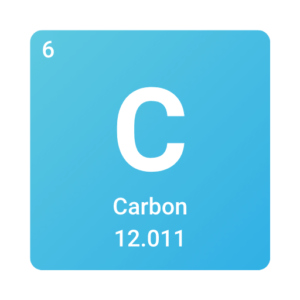
Experimental Setup:
Determining and comparing the energy released in the combustion of different alcohols, and concluding with a research on which one of them is more efficient as a fuel substituent to fossil fuels. A copper calorimeter, 3 different kinds of alcohol and a spirit burner is used to conduct the experiment.
Independent Variables:
Number of carbon atoms in the molecule
Constant Variables:
Volume of water, initial mass of alcohol
Dependent Variables:
Enthalpy change of combustion of the alcohol
6.) Investigating the amount of Iodine content in Iodised Salt
Experimental Setup:
By redox titration, one can determine the amount of sodium thiosulphate required to reduce iodine to Iodide ions. To begin with, a sodium thiosulfate solution is prepared. After, a 0.5% starch indicator solution is also made. Then, distilled water is added to the iodised salt for it to get dissolved. Then, hydrochloric acid and potassium iodide solution is added to the dissolved salt. The solution will turn a yellow/brown color as iodine is produced. The solution is later titrated with the sodium thiosulfate solution until the yellow/brown color of iodine becomes very pale. Titration is repeated until concordant results come.
Independent Variables:
Iodised salt
Constant Variables:
Hydrochloric acid, Potassium iodide,
Dependent Variables:
Sodium thiosulfate solution
7.) To what extent does electrolyte concentration affect electroplating efficiency?
Experimental Setup:
Providing different concentrations of an electrolyte(copper sulphate) in the electroplating process for an iron sheet and measuring the amount of copper electroplated within a time duration.
Independent Variables:
Various concentrations of copper sulphate solution
Dependent Variables:
Mass of copper electroplated
8.) To what extent does temperature affect the calcium concentration of different types of milk?
Experimental Setup:
Heating different types of milk(such as oat, almond, cow etc.) at different temperatures for a certain duration of time and measuring the calcium concentration of the sample before and after utilising complexometric titration
Independent Variables:
Varieties of Milk
Dependent Variables:
Calcium concentration
9.) Investigation of the clock reaction
Experimental Setup:
The experiment aims to investigate the clock reaction, which is a reaction that changes color after a certain time interval. The experiment will use the reaction between potassium iodide (KI) and sodium thiosulfate (Na2S2O3) in the presence of starch as an indicator. The experiment will vary the concentration of the reactants to determine how it affects the time it takes for the reaction to occur. By measuring the time it takes for the reaction to occur at different concentrations of reactants, we can determine the rate of reaction and calculate the activation energy.
Independent Variables:
Concentration of KI and Na2S2O3
Constant Variables:
Amount of starch used, the temperature of the reaction, and the volume of the reactants
Dependent Variables:
Time it takes to change color (Reaction time)
10.) Investigating the Effect of Electrolyte Concentration on the Rate of Galvanic Cell Reactions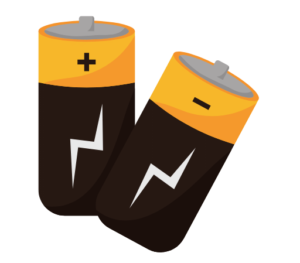
Experimental Setup:
In this experiment, students will set up galvanic cells using zinc and copper electrodes immersed in various electrolyte solutions of different concentrations. The rate of the galvanic cell reaction will be measured by monitoring the potential difference (voltage) between the electrodes over time. The electrolyte solutions tested will include solutions of different concentrations of copper sulfate, zinc sulfate, and potassium chloride. The aim of the experiment is to determine how the concentration of the electrolyte affects the rate of the galvanic cell reaction, which can be used to predict the feasibility and efficiency of electrochemical processes.
Independent Variables:
Concentration of electrolyte solution
Constant variables:
Type of electrode, surface area of electrode, temperature, and time of reaction.
Dependent Variables:
Rate of galvanic cell reaction (measured as voltage change over time)
11.) Investigating the Effect of Varying the Amount of Acid Catalyst on the Yield of Esterification Reaction
Experimental Setup:
In this experiment, the effect of varying the amount of acid catalyst on the yield of the esterification reaction will be investigated. A mixture of carboxylic acid and alcohol will be heated in the presence of sulfuric acid catalyst, and the yield of the ester product will be determined by the amount of soap produced. The experiment will be carried out by preparing several reaction mixtures with different amounts of sulfuric acid catalyst and the same amount of reactants. The reaction progress will be monitored by measuring the pH and the temperature of the reaction mixture. After the reaction is complete, the yield of soap will be determined by titration with a standardized sodium hydroxide solution.
Independent Variables:
Amount of sulfuric acid catalyst (0.1 M, 0.2 M, 0.3 M, 0.4 M)
Constant Variables:
Amount of reactants (carboxylic acid and alcohol), reaction time and temperature, concentration and volume of sodium hydroxide solution used for titration.
Dependent Variables:
Yield of soap (measured by titration with sodium hydroxide)
12.) Investigating the Stoichiometry of a Chemical Reaction using Vinegar and Baking Soda
Experimental Setup:
The aim of this experiment is to determine the stoichiometry of a chemical reaction between vinegar and baking soda. This experiment involves measuring the volume of CO2 gas produced during the reaction between vinegar and baking soda. The reaction equation for this experiment is CH3COOH + NaHCO3 → CH3COONa + CO2 + H2O. The experiment will be conducted by mixing different amounts of vinegar and baking soda in a flask and measuring the volume of CO2 gas produced. The volume of CO2 gas produced will be recorded at regular intervals of time using a gas syringe. The stoichiometry of the reaction will be determined by calculating the ratio of the moles of reactants and products involved in the reaction.
Independent variable:
The amount of vinegar and baking soda used in the reaction.
Control variable:
The temperature, pressure, and time of the experiment.
Dependent variable:
The volume of CO2 gas produced during the reaction.
13.) Investigating the effect of different solvents on the fluorescence of a dye
Experimental Setup:
The experiment involves preparing solutions of a fluorescent dye in various solvents, such as water, ethanol, and acetone. The solutions are then exposed to a UV light source, and the intensity of the fluorescence emitted by the dye is measured using a spectrophotometer. The experiment is repeated with different concentrations of the dye in each solvent to investigate the effect of concentration on fluorescence.
Independent Variables:
The type of solvent used.
Constant Variables:
The concentration of the dye in each solution, the volume of solvent used, the wavelength of the UV light source, and the distance between the sample and the spectrophotometer.
Dependent Variables:
The intensity of fluorescence emitted by the dye.
14.) Investigating Energy Content of Fuels
Experimental Setup:
In this experiment, the energy content of two different fuels, such as ethanol and gasoline, will be compared. The fuels will be burned in a calorimeter, and the heat released during the combustion reaction will be used to heat a known amount of water. The change in temperature of the water will be used to calculate the energy content of each fuel. The experiment will be repeated three times for each fuel to ensure accuracy and reliability.
Independent Variables:
The type of fuel being burned (ethanol or gasoline)
Constant Variables:
The amount of fuel used, the amount of water used, the temperature of the water before the combustion reaction, the mass of the calorimeter, the time over which the reaction occurs, the pressure and volume of the reaction environment.
Dependent Variables:
The energy released during the combustion reaction (measured in joules or calories)
15.) Comparing the effectiveness of different brands or types of tablets in neutralizing excess stomach acid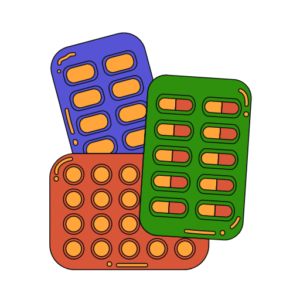
Experimental Setup:
To do this experiment, we could first use a pH meter to measure the initial pH of a simulated stomach acid solution (e.g. 0.1 M HCl), and record this as the dependent variable. Next, we could add a known amount of each tablet to separate portions of the acid solution, and record the time it takes for the pH to reach a neutral value of 7.0. This would be repeated for several different types of tablets and for a control (i.e. a portion of acid without any tablet added). Finally, we could calculate the average time taken to neutralize the acid for each type of tablet, and compare these values to determine which tablet is most effective in terms of speed and efficiency of acid neutralization.
Independent Variables:
type of indigestion tablet
Dependent variable:
time taken to neutralize acid solution
Control variable:
starting pH of acid solution, amount of acid solution, amount of tablet added, temperature of solution, stirring rate, etc.
16.) How does the concentration of citric acid affect the rate of effervescence in Alka-Seltzer tablets?
Experimental Setup:
In this experiment, the rate of effervescence in Alka-Seltzer tablets will be measured by observing the time it takes for the tablet to completely dissolve and produce bubbles. To carry out the experiment, each concentration of citric acid solution will be prepared and labeled. Then, an Alka-Seltzer tablet will be added to each solution, and the time it takes for the tablet to completely dissolve and produce bubbles will be recorded. The data collected will be used to create a graph of the time it takes for the tablet to dissolve versus the concentration of citric acid solution. The graph will be used to analyze the relationship between the two variables and draw conclusions about the effect of citric acid concentration on the rate of effervescence in Alka-Seltzer tablets.
Independent Variables:
Concentration of citric acid solution, Amount of water
Constant Variables:
The temperature (room temperature), and the brand of Alka-Seltzer tablets used
Dependent Variables:
Time it takes for the tablet to dissolve completely
17.) What is the enthalpy change of combustion of magnesium and how does it compare to the theoretically calculated value using Hess’s Law?
Experimental Setup:
In this experiment, the enthalpy change of combustion of magnesium will be determined by measuring the heat released from the reaction between magnesium and hydrochloric acid. The heat released will be measured using a simple calorimeter. The experimental value will then be compared to the theoretically calculated value using Hess’s Law, which states that the enthalpy change of a reaction is independent of the pathway taken, provided that the initial and final conditions are the same. The enthalpy change of combustion of magnesium can be calculated by combining the enthalpy changes of the reactions that make up the overall reaction.
Independent Variables:
The mass of magnesium used in the reaction, the concentration and volume of hydrochloric acid used in the reaction
Constant Variables:
The mass and type of calorimeter used, the initial and final temperature of the reaction mixture, and the atmospheric conditions during the experiment
Dependent Variables:
The heat released from the reaction
18.) How does changing the concentration of a reducing agent affect the rate of the iodine-clock reaction?
Experimental Setup:
In this experiment, the iodine-clock reaction will be used to investigate the effect of changing the concentration of a reducing agent on the rate of the reaction. The reaction involves the oxidation of iodide ions by hydrogen peroxide, which is catalyzed by iodide ions. The time taken for the blue-black color to appear will be measured using a stopwatch. The reducing agent will be varied in concentration by diluting it with water. A range of concentrations will be used to determine the effect of concentration on the rate of the reaction. The experiment will be conducted at room temperature to control the temperature as a variable.
Independent Variables:
Concentration of reducing agent (varied by dilution with water), Temperature, volume of reactants
Constant Variables:
Concentration of iodine, concentration of hydrogen peroxide, use of the same stopwatch for all trials
Dependent Variables:
Time taken for the blue-black color to appear (indicating completion of the reaction)
19.) How does the concentration of electrolyte affect the voltage output of an electrochemical cell?
Experimental Setup:
The experiment involves constructing a simple electrochemical cell using two different metals (e.g., copper and zinc) as electrodes and a salt bridge filled with different concentrations of electrolyte (e.g., NaCl). The voltage output of the cell will be measured using a voltmeter for each concentration of electrolyte. The experiment will be repeated with different concentrations of electrolyte to observe the effect of concentration on the voltage output of the cell.
Independent Variables:
Concentration of electrolyte
Constant Variables:
The type of metals used as electrodes, the size of the electrodes, the distance between the electrodes, the temperature, the surface area of the electrodes, the type of electrolyte used, and the concentration of the metals used.
Dependent Variables:
Voltage output of the electrochemical cell
20.) How does the polarity of different solvents affect the separation of ink components in paper chromatography?
Experimental Setup:
The purpose of this experiment is to investigate how the polarity of different solvents affects the separation of ink components in paper chromatography. The experiment will involve placing a small spot of ink at the bottom of chromatography paper and then dipping the paper in different solvents of varying polarities. As the solvent travels up the paper, it will carry the ink components with it, and the separation of the components will be observed. The distance traveled by each component and the Rf value will be calculated for each solvent.
Independent Variables:
The polarity of the solvents used (e.g. water, ethanol, acetone, etc.), the size of the ink spot
Constant Variables:
The type of ink used, the type and size of the chromatography paper used, the temperature and humidity of the experimental environment, the length of time the paper is left in the solvent
Dependent Variables:
The distance traveled by each component of the ink and the Rf value
21.) How does the energy content of different fuels compare?
Experimental Setup:
The aim of this experiment is to compare the energy content of different fuels by determining the enthalpy change of combustion. The fuels used in this experiment will be ethanol, propanol, and butanol. A calorimeter will be used to measure the heat released during the combustion of each fuel. The mass of each fuel burned will be controlled, and the temperature change of water will be recorded before and after each combustion. The enthalpy change of combustion will then be calculated using the formula ΔH = q/m where ΔH is the enthalpy change, q is the heat released, and m is the mass of fuel burned.
Independent Variables:
The independent variable in this experiment is the type of fuel used (ethanol, propanol, and butanol).
Constant Variables:
The mass of fuel burned will be controlled, and the same calorimeter will be used for each combustion. The starting temperature of the water will also be controlled, as will the room temperature during the experiment.
Dependent Variables:
The dependent variable is the enthalpy change of combustion, which will be calculated based on the heat released during combustion.
22.) How does the concentration of a sodium polyacrylate solution affect its ability to absorb water?
Experimental Setup:
The experiment will involve creating sodium polyacrylate solutions of varying concentrations, and then measuring their ability to absorb water. This will be done by placing a small amount of each solution in a separate container, and then adding a fixed amount of water to each container. The containers will be left undisturbed for a set amount of time to allow the sodium polyacrylate to absorb as much water as possible. After the set time, the remaining water in each container will be measured, and the amount absorbed will be calculated. The results will be analyzed to determine the relationship between the concentration of the sodium polyacrylate solution and its ability to absorb water.
Independent Variables:
Concentration of sodium polyacrylate solution
Constant Variables:
Type of sodium polyacrylate used, amount of water added, temperature, and time allowed for absorption
Dependent Variables:
Amount of water absorbed by the sodium polyacrylate
23.) How does the temperature affect the solubility of potassium nitrate (KNO3) in water, and how accurate are the solubility curves predicted by the literature values?
Experimental Setup:
The purpose of this experiment is to determine the solubility of KNO3 in water at different temperatures and compare the results with the literature values. The experiment will involve dissolving a set amount of KNO3 in a fixed amount of water at different temperatures, ranging from 10°C to 70°C. The solutions will then be cooled and allowed to crystallize, and the mass of KNO3 crystals formed will be measured. These measurements will be used to construct a solubility curve for KNO3 at different temperatures. The solubility curve will then be compared to the literature values to assess its accuracy.
Independent Variables:
Temperature (10°C, 20°C, 30°C, 40°C, 50°C, 60°C, 70°C)
Control Variables: Mass of KNO3, Volume of water, stirring rate, cooling rate, and measurement instruments
Constant Variables:
The amount of fuel used, the amount of water used, the temperature of the water before the combustion reaction, the mass of the calorimeter, the time over which the reaction occurs, the pressure and volume of the reaction environment.
Dependent Variables:
Solubility of KNO3 in water (grams of KNO3 per 100g of water)
IB Tutoring Recent Blogs
Give our blog a read for anything you need















